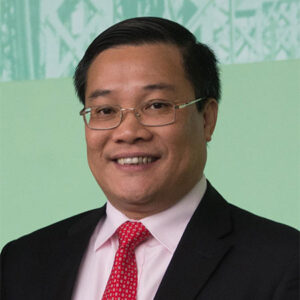Qing-Chang Zhong
Home / Qing-Chang Zhong
Presentations:
Power-Electronics-Enabled Autonomous Power Systems: Next-Generation Smart Grids
Power systems are going through a paradigm shift. Centralized large power plants are being replaced with millions of incompatible, relatively small distributed generators. At the same time, the number of loads is constantly increasing. These present unprecedented challenges to the operation of future power systems. In this talk, it will be revealed that the fundamental challenge behind this paradigm shift is that future power systems will be power-electronics-enabled with millions of heterogeneous active players, rather than electric-machines-based with thousands of homogeneous generators. A holistic grid architecture, referred to as the SYNDEM (meaning synchronized and democratized) grid architecture, together with its technical routes, will be presented to accelerate this paradigm shift. Millions of power-electronics-enabled active players, large or small, supplying or consuming, can be controlled to behave like virtual synchronous machines (VSM) so that they can equally, autonomously, and actively take part in the regulation of system frequency and voltage. The lastest results from a system consisting of 108 physical power electronic converters established with the SYNDEM architecture and technologies will be presented. Moreover, the communication infrastructure can be released from the low-level control of power systems. This opens up the prospect of achieving autonomous operation for future power systems without relying on communication networks. This holistic solution could considerably enhance the stability, scalability, operability, security, reliability and resiliency of the next-generation smart grid.
Virtual Synchronous Machines: A Unified Interface for Smart Grid Integration
Power systems are going through a paradigm change from centralized generation to distributed generation and further on to smart grids. More and more renewable-energy sources, electric vehicles, energy storage systems, and so forth are being connected to power systems through power electronic converters. Moreover, the majority of loads are expected to connect to the grid through power electronic converters as well. It will be shown in this talk that these converters, either on the supply side or on the load side, can all be controlled to behave like virtual synchronous machines (VSMs) and possess the dynamics of synchronous machines, providing a unified interface for smart grid integration.
Go Real: Power Electronics From Simulations to Experiments in Hours
The only constant is change – power systems worldwide are going through a paradigm change from centralized generation to distributed generation; transportation systems are being electrified; and billions of lives in third-world countries are awaiting low-cost sustainable electricity. Control and power electronic technologies are two common enablers to address these grand challenges. Empowering next-generation engineers with hands-on skills in control and power electronics has become a priority for global higher education. However, setting up a suitable experimental system requires time, effort, and a broad range of expertise. This article aims to help researchers, university professors, graduate students, and engineers lower the barriers to go real from simulations to experiments for various power electronic systems and improve the efficiency and productivity of research, development, and education. It shows that it is possible to obtain experimental results within hours after completing simulations by adopting the SYNDEM Smart Grid Research and Educational Kit, which is a reconfigurable, opensource, multifunctional power electronic converter with the capability of directly downloading codes from MATLAB/Simulink. This minimizes the time, cost, and efforts needed to develop hardware systems and removes the burden of coding. After briefly introducing the SYNDEM kit and highlighting the automatic code generation capability, some case studies featuring single-node systems and multi-node systems will be illustrated.
© Copyright 2023 IEEE — All rights reserved. A not-for-profit organization, IEEE is the world’s largest technical professional organization dedicated to advancing technology for the benefit of humanity.


